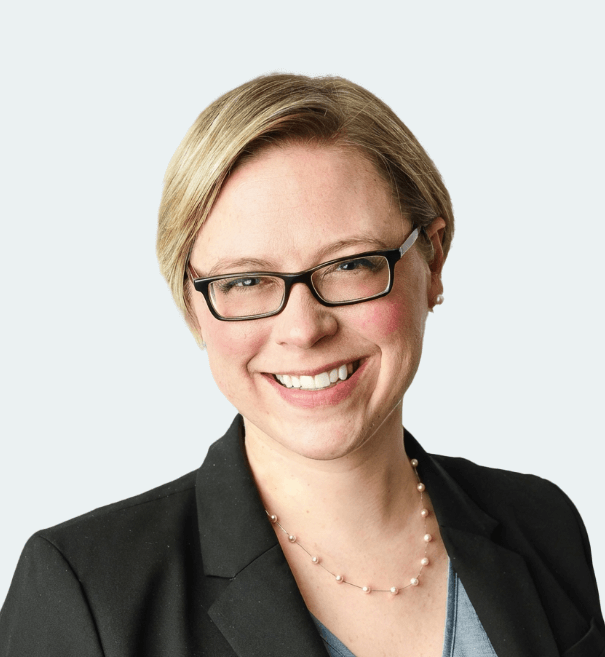
Keynote interview
Codifying best practice
Tim Toska and Emily Ergang Pappas were interviewed in June’s Buyouts Secondaries Report. They outlined how the SEC private fund rules will provide a regulatory framework around GP-led secondaries, ultimately supporting their continued growth.

Interview
Q To what extent do the SEC’s private fund rules impact the secondaries industry and how have these changes
been received?
Tim Toska: The US Securities and Exchange Commission’s new private fund adviser rules are certainly far reaching and there are significant changes involved. But, as it relates to the secondaries industry, it is the mandatory requirement for a fairness opinion or valuation in every GP-led secondaries deal that is the most directly relevant. There are also new disclosure requirements around material business relationships and activities, which must be formally documented and posted to a portal. In many instances, both are already happening, but the rules mean there is now a regulatory requirement to take these extra steps in what might well be a time sensitive transaction. That can always be a cause for concern. Managers want to be able to proceed with deals in as frictionless a way as possible. That said, compared to some other aspects of the rules, these provisions are unlikely to keep many awake at night.
Q Could a clearer regulatory framework around GP-led secondaries be welcomed, particularly when it comes to ensuring LPs are comfortable with these deals?
TT: Absolutely. This is a fast-growing market, and it has been exciting to see GP-led secondaries emerge as a valid avenue for generating liquidity, alongside traditional M&A and IPOs. But there are clearly some inherent conflicts of interest that need to be carefully managed because the last thing anyone wants is for questions to be asked in hindsight, should a deal not turn out as planned. These are not arms length transactions and so they lend themselves to being second guessed. Increasing the regulatory framework helps eliminate any of that doubt and so from the perspective of the ongoing growth and maturity of the sector, I think it is largely to be welcomed.
Emily Ergang Pappas: It also goes long way towards ensuring all investors are in the same situation. Yes, there were many funds that were already including fairness opinions in their deals and going the extra mile in terms of transparency, but now investors in every fund will be afforded that same level of protection from potential conflicts of interest. The codification of best practice means all investors are now in the same boat.
Q What modifications have we seen since the initial rules were proposed and where are we now in terms of when the rules will be enacted?
EEP: We are in a unique position as fund administrators in that these rules don’t technically apply to us, but they will apply to most of our clients and will affect the services we provide. We are therefore keeping a close eye on how things develop. There are a number of lawsuits that are ongoing, and no-one is entirely sure what the timelines are likely to be, but we are certainly paying close attention. I would agree with Tim though that this rule is not as controversial as some of the others. We have been heavily focused on the quarterly statement rule, for example, because there is a lack of clarity there and because it impacts our role as administrators particularly. There have already been some modifications made between the proposed rules and final rules when it comes to secondaries, with greater flexibility to choose between either a fairness opinion or a valuation. Beyond that we are in a wait and watch holding pattern, considering what the eventual outcomes are going to mean for clients.
Q Given the GP-led market’s growth, is it reasonable to expect it will be subject to greater regulatory scrutiny going forward, beyond these specific rules?
EEP: The short answer is yes, absolutely. Anytime something grows in size and popularity to this extent, particularly when it involves readily identifiable conflicts of interest, it is inevitable that the SEC and other regulators around the world are going to want to put some parameters in place to ensure investors are adequately protected.
Q Against this regulatory backdrop, how are you seeing the GP-led secondaries market evolve?
TT: I would say that the GP-led secondaries market has now reached a stage in its maturation journey where it sits side by side with other strategies. Certainly, in terms of deal volumes, GP-leds have been at or about 50 percent of the overall secondaries market for the past few years. In fact, there has been insufficient capital available to meet demand from GPs, who now view this as a viable exit route and means to generate liquidity in an environment where liquidity has been in short supply.
Q Will that growth trajectory continue unabated as and when M&A markets return?
TT: I believe that it will. There will always be reasons for GPs to pursue this type of deal, regardless of what is happening in the broader macroeconomic environment. It is true that a revival in M&A will lessen the need for GPs to turn to continuation vehicles to generate distributions for investors. However, there will always be sectors, or segments of the market, that are facing structural or economic hardships and where secondaries capital is required.
Furthermore, there will always be situations where the timing just isn’t right for a GP to exit, despite the fact it is running up against the limits of a fund’s life. Due to the intense growth in volume and awareness over the past few years, GPs know these GP-led deals are something they will always have in their back pocket.
Q The GP-led market is widely believed to be one of the most undercapitalized corners of private markets. How do you see the buyside evolving going forward?
TT: The secondaries market, and GP-led secondaries in particular, are undercapitalized relative to the supply of transactions in the market. But I don’t necessarily view that as a negative. In fact, in many ways it can be viewed as a positive, because it ensures buyers are able to originate and diligence opportunities in a disciplined manner rather than feeling any pressure to put money to work. Of course, we don’t want to see that undercapitalization continue forever. But it is no bad thing for supply to outpace demand as the asset class matures. That will help ensure everyone concerned has positive experiences, including LPs that decide to roll and the new investors that come in. The more of these win-win situations that we see come to fruition, ultimately leading to successful realizations over time, the better it is for the asset class in the long term.








